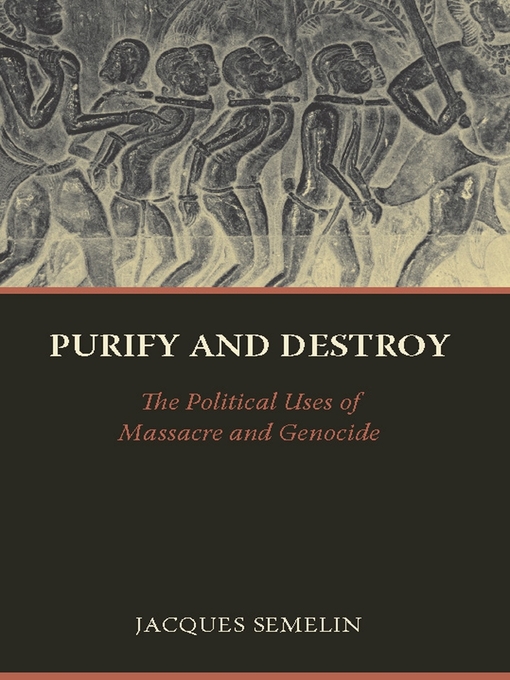How can we comprehend the sociopolitical processes that give rise to extreme violence, ethnic cleansing, or genocide? A major breakthrough in comparative analysis, Purify and Destroy demonstrates that it is indeed possible to compare the Holocaust, the Rwandan genocide, and ethnic cleansing in Bosnia-Herzegovina while respecting the specificities of each appalling phenomenon. Jacques Semelin achieves this, in part, by leading his readers through the three examples simultaneously, the unraveling of which sometimes converges but most often diverges.
Semelin's method is multidisciplinary, relying not only on contemporary history but also on social psychology and political science. Based on the seminal distinction between massacre and genocide, Purify and Destroy identifies the main steps of a general process of destruction, both rational and irrational, born of what Semelin terms "delusional rationality." He describes a dynamic structural model with, at its core, the matrix of a social imaginaire that, responding to fears, resentments, and utopias, carves and recarves the social body by eliminating "the enemy." Semelin identifies the main stages that can lead to a genocidal process and explains how ordinary people can become perpetrators. He develops an intellectual framework to analyze the entire spectrum of mass violence, including terrorism, in the twentieth century and before. Strongly critical of today's political instrumentalization of the "genocide" notion, Semelin urges genocide research to stand back from legal and normative definitions and come of age as a discipline in its own right in the social sciences.
- Arab American Heritage Month
- Past Long Island Reads Picks
- National Autism Awareness Month
- National Poetry Month
- Passover
- Earth Day
- Blake Crouch: Dark Matter and More
- She doesn't even go here!: For fans of Mean Girls
- April Showers Bring May Flowers
- Not Just Another Teen Book- YA for Adults
- Retro Reads - Books from the 1900s
- New eBook additions
- Page to Screen
- See all
- Arab American Heritage Month
- Past Long Island Reads Picks
- National Autism Awareness Month
- Earth Day
- Poetry Is Meant To Be Spoken
- National Poetry Month
- She doesn't even go here!: For fans of Mean Girls
- April Showers Bring May Flowers
- Page to Screen
- Not Just Another Teen Book- YA for Adults
- Retro Reads - Books from the 1900s
- New audiobook additions
- Now Available! Popular Audiobooks You May Have Missed
- See all
- #ownvoices / Diverse Books
- Antiracism Resources
- Sheet Music & Song Books
- Bücher auf Deutsch / Books in German
- Civil Service Test Prep
- The Great Courses
- QuickReads Collection
- See all

